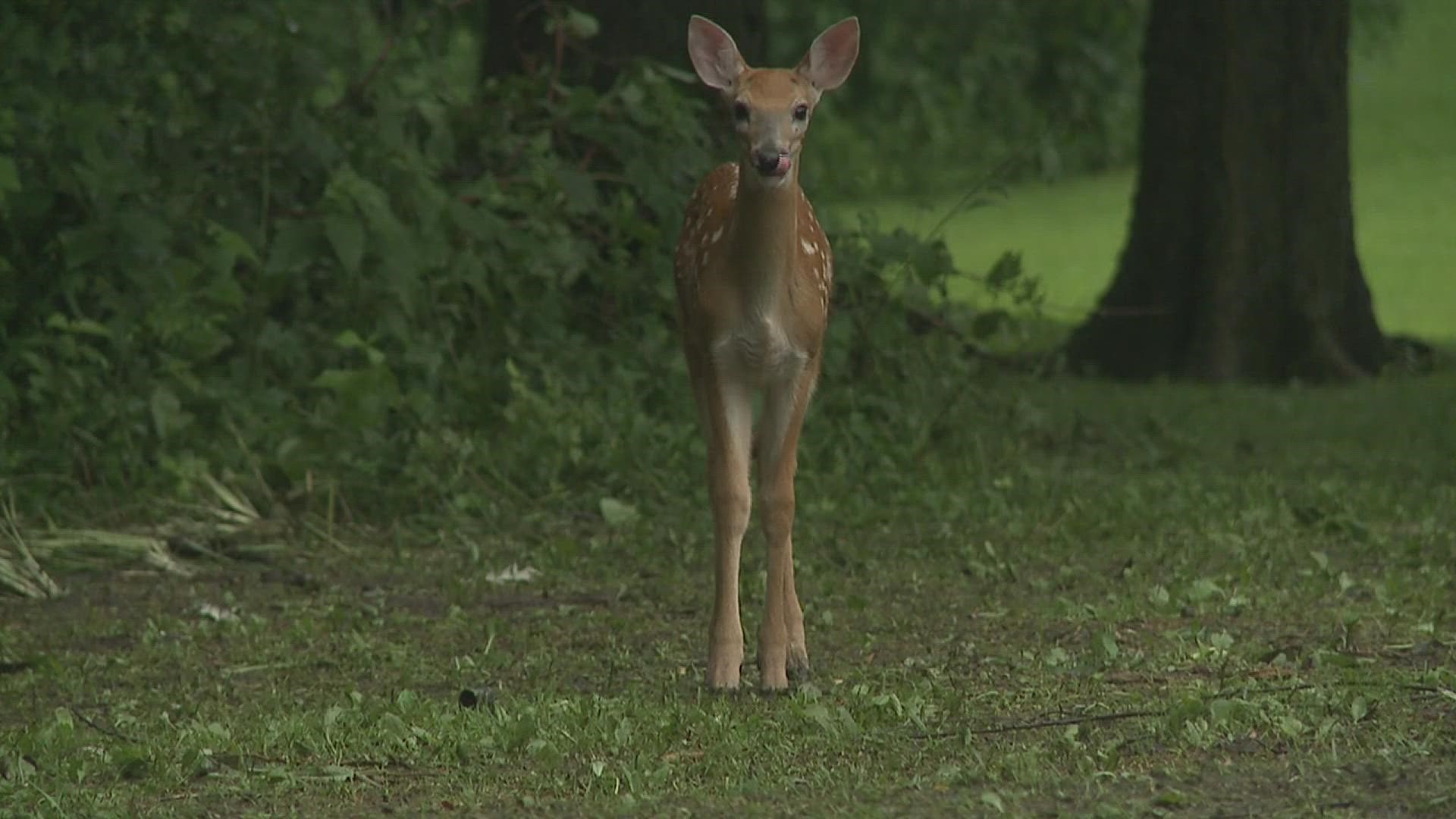DAVENPORT, Iowa — A recent study has found white-tailed deer in Iowa are not only becoming infected with the coronavirus but also that humans are most likely the cause.
From April to December 2020, researchers at Penn State University examined lymph nodes samples, collected by the Iowa Department of Natural Resources, from 283 deer. On average, 33% of both the captive and wild deer tested positive.
During times of case surges among humans, including from November to December 2020, that positivity rate jumped to over 80%.
"The results were quite stunning," said Dr. Suresh Kuchipudi, a virologist at Penn State who helped lead the study alongside Dr. Vivek Kapur. "When we started this study we were not expecting to see that level of positivity."
The findings in the study have not been published in a peer-reviewed journal yet, but the authors leading the research as well as wildlife officials in Iowa said the results were so troubling they needed to warn deer hunters, so as to slow future transmission.
Through genomic evidence, scientists were able to deduce that the strains being found in the deer matched whatever strain was circulating through humans at the same time. Consequently, researchers concluded the animals were picking up the virus from humans.
While it's still unclear how exactly that's happening, Kuchipudi said there are multiple conditions where exposure might be possible.
"For example, somebody feeding deer in their backyard, or you left some food that may have been contaminated," he said. "When deer come to eat or to find the food, they could be licking surfaces or eating food that could be infected."
So what does this mean for humans?
There are over 30 million white-tailed deer in the U.S., and researchers said it's extremely likely that the infected animals aren't contained to just Iowa. Four days after the study out of Penn State was published, another one in Ohio was posted on Nov. 5. This one looked at 360 wild deer and found a 36% positivity rate.
"It's certainly possible, and I would probably say even likely, that this virus is circulating in deer populations in other states as well," said Tyler Harms, a biometrician and leader of the deer program at Iowa's Department of Natural Resources.
Harms said he was also taken aback by the findings of the study but doesn't think hunters need to panic.
"It certainly shouldn't rise to the level of concern that keeps them from hunting this year," he said. "There's no evidence at this point that the virus can pass from deer back to humans. There's no evidence that humans could get Covid-19 from eating infected venison."
A big weekend of hunting is quickly approaching. On Dec. 4-5, the DNR anticipates roughly 40,000 hunters will be walking fields across Iowa.
The state is urging all those hunters to take extra precautions when processing their harvested animals, including wearing gloves and thoroughly washing hands and equipment after an outing.
"We're not recommending wearing a mask at this time," said Harms, a point Kuchipudi differs on. "As long as folks are taking those precautions, that risk should be very minimal for our hunters."
Kuchipudi noted that it's still too early to confidently say whether or not the spread among the animals will pose health risks, given that there's always complications when a virus can find more than one host to circulate.
"Certainly, white-tailed deer or any other animal serving as a reservoir makes the situation much complex. Therefore, we're calling for urgent action to monitor the transmission," he said.
Scientists are anxiously examining if the virus will be able to spread from deer into other animal populations, as well as testing how sick the diseased deer are becoming. After early research, it appears the deer are infected with only mild cases.
"But the big unknown is when the animals are old, or have other infectious diseases, or are under stress, or starving, or even during hunting seasons when they are running around, are they showing any suffering? Clinical disease is currently completely unknown."
Moving forward, he said, while more studies are being conducted, the public has a big role to play in stopping the spread.
"We must remember that the source of the continued circulation of the virus, currently, is among human beings because there are a lot of people that are still unprotected," said Kuchipudi. "The major task for all of us is to get a vaccine if you have not been vaccinated so we could minimize or almost stop the virus transmission."

